 OSHAs “$afety Pays” program can help employers assess the impact of occupational injuries and illnesses on their profitability. This program uses a companys profit margin, the average costs of an injury or illness, and an indirect cost multiplier to project the amount of sales a company would need to cover those costs. The program is intended as a tool to raise awareness of how occupational injuries and illnesses can impact a companys profitability, not to provide a detailed analysis of a particular companys occupational injury and illness costs.
OSHAs “$afety Pays” program can help employers assess the impact of occupational injuries and illnesses on their profitability. This program uses a companys profit margin, the average costs of an injury or illness, and an indirect cost multiplier to project the amount of sales a company would need to cover those costs. The program is intended as a tool to raise awareness of how occupational injuries and illnesses can impact a companys profitability, not to provide a detailed analysis of a particular companys occupational injury and illness costs.
Category: Ergonomics
10 Most Dangerous Jobs in America
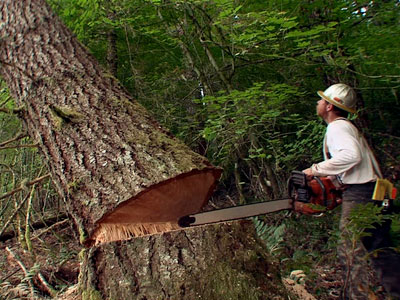 Before you complain about punching the time clock, read this list for some perspective. Maybe the coffee stinks and you don’t like your boss, but at least the threat of death or injury isn’t perpetually hanging over your head. The order may change from year to year, but these are typically the most dangerous jobs in America.
Before you complain about punching the time clock, read this list for some perspective. Maybe the coffee stinks and you don’t like your boss, but at least the threat of death or injury isn’t perpetually hanging over your head. The order may change from year to year, but these are typically the most dangerous jobs in America.
1. Logger
2. Pilot
3. Fisher
4. Iron/Steel Worker
5. Garbage Collector
6. Farmer/Rancher
7. Roofer
8. Electrical Power Installer/Repairer
9. Sales, Delivery, and Other Truck Driver
10. Taxi Driver/Chauffeur
The Five Steps of Risk Management Leads To Lower Cost
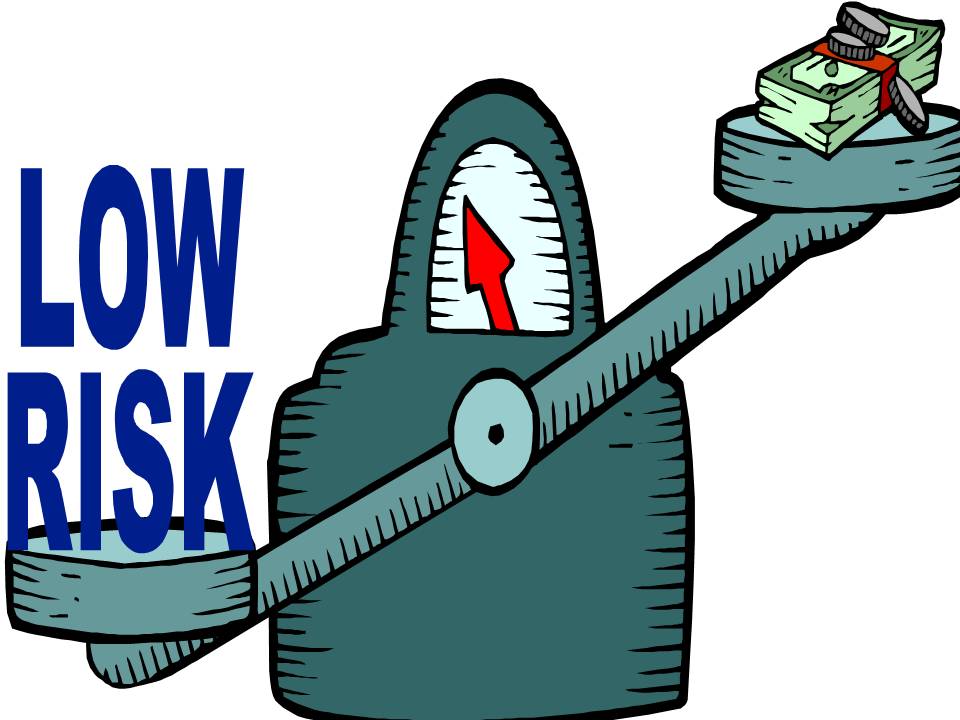 There are five steps to risk management:
There are five steps to risk management:
- Identify
- Analyze
- Control
- Finance
- Measure
The most important step is “Identify” because you can’t Analyze, Control, Finance or Measure what you don’t know. Insurance is “NOT” risk management. Insurance is “FINANCING” risk. Managing risk 365 days a year vs. buying insurance 1 day a year is the key to lowering the total cost of risk (TCOR) for business.
Older Workers To Outnumber Younger Employees For The First Time
 Whether out of economic need or simply a desire to continue working, many baby boomers aren’t leaving their jobs anytime soon.
Whether out of economic need or simply a desire to continue working, many baby boomers aren’t leaving their jobs anytime soon.
In fact, many workers 55 and older are staying in the workforce. By year’s end their numbers will surpass those who are aged 25 to 34. And the trend is expected to continue for the foreseeable future — until 2020.
via Older Workers To Outnumber Younger Employees For The First Time.
Stop the Strain at Work
 Overexertion has long been among the leading causes of nonfatal workplace injuries, and attempts to combat it continue to be a burden on employers and their pocketbooks. An estimated 3.5 million overexertion injuries occur every year, most of which are from excessive lifting, lowering, pushing, pulling or carrying. Back injuries are the most common form of overexertion in the workplace and can result in huge costs. According to a 2010 report from the Boston-based Liberty Mutual Research Institute for Safety, in 2008, overexertion cost businesses $13.4 billion in direct workers’ compensation costs – accounting for more than 25 percent of the overall $53.4 billion national burden.
Overexertion has long been among the leading causes of nonfatal workplace injuries, and attempts to combat it continue to be a burden on employers and their pocketbooks. An estimated 3.5 million overexertion injuries occur every year, most of which are from excessive lifting, lowering, pushing, pulling or carrying. Back injuries are the most common form of overexertion in the workplace and can result in huge costs. According to a 2010 report from the Boston-based Liberty Mutual Research Institute for Safety, in 2008, overexertion cost businesses $13.4 billion in direct workers’ compensation costs – accounting for more than 25 percent of the overall $53.4 billion national burden.
via 6 11 Stop the Strain.
Machine Safety is Critical
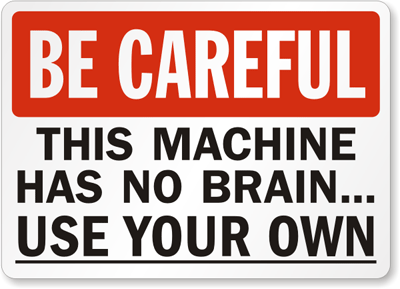 Machine safety is critical for worker safety, because machines have many ways to injure workers: Many machines have moving parts, sharp edges, and hot surfaces with the potential to cause severe workplace injuries such as crushed fingers or hands, amputations, burns, or blindness. Safeguards are essential for protecting workers from these preventable injuries. Any machine part, function, or process that might cause injury must be safeguarded. When the operation of a machine may result in a contact injury to the operator or others in the vicinity, the hazards must be eliminated or controlled
Machine safety is critical for worker safety, because machines have many ways to injure workers: Many machines have moving parts, sharp edges, and hot surfaces with the potential to cause severe workplace injuries such as crushed fingers or hands, amputations, burns, or blindness. Safeguards are essential for protecting workers from these preventable injuries. Any machine part, function, or process that might cause injury must be safeguarded. When the operation of a machine may result in a contact injury to the operator or others in the vicinity, the hazards must be eliminated or controlled
via CDC – Machine Safety – NIOSH Workplace Safety and Health Topic.
Young Worker Safety and Health
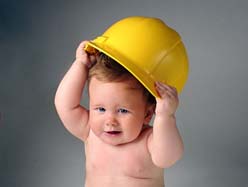 In 2010, there were approximately 17.5 million workers less than 24 years of age, and these workers represented 13% of the workforce. Young workers have high occupational injury rates which are in part explained by a high frequency of injury hazards in workplaces where they typically work (e.g. hazards in restaurant settings associated with slippery floors and use of knives and cooking equipment). Inexperience and lack of safety training may also increase injury risks for young workers. And, for the youngest workers, those in middle and high schools, there may be biologic and psychosocial contributors to increased injury rates, such as inadequate fit, strength, and cognitive abilities to operate farm equipment such as tractors.
In 2010, there were approximately 17.5 million workers less than 24 years of age, and these workers represented 13% of the workforce. Young workers have high occupational injury rates which are in part explained by a high frequency of injury hazards in workplaces where they typically work (e.g. hazards in restaurant settings associated with slippery floors and use of knives and cooking equipment). Inexperience and lack of safety training may also increase injury risks for young workers. And, for the youngest workers, those in middle and high schools, there may be biologic and psychosocial contributors to increased injury rates, such as inadequate fit, strength, and cognitive abilities to operate farm equipment such as tractors.
via CDC – Young Worker Safety and Health – NIOSH Workplace Safety and Health Topic.
Workplace Safety – Accident/Incident/Near Miss Investigation
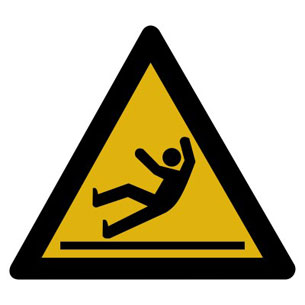 One of the best ways to avoid further accidents is to understand how an accident occurred and how to avoid that type of accident in the future. The accident investigation is a tool. The goal is not to lay blame. The goal in an accident investigation is to:
One of the best ways to avoid further accidents is to understand how an accident occurred and how to avoid that type of accident in the future. The accident investigation is a tool. The goal is not to lay blame. The goal in an accident investigation is to:
- Satisfy legal requirements (National Institute for Occupational Safety and Health? NIOSH, and Occupational Safety and Health Administration?OSHA)
- Find out what happened and determine immediate and underlying or root causes.
- Rethink the safety hazard.
- Introduce ways to prevent a reoccurrence
- Establish training needs.
- An accident, a near miss and an incident should all be investigated.
- Accident investigations are a tool for uncovering hazards that either were missed earlier or require new controls (policies, procedures or personal protective equipment).
- Near-miss reporting and investigation identify and control safety or health hazards before they cause a more serious incident.
- Incident investigations should focus on prevention.
ACCIDENT — an undesired event or sequence of events causing injury, ill-health or property damage.
NEAR MISS — near misses describe incidents where, given a slight shift in time or distance, injury, ill-health or damage easily could have occurred, but didn’t.
INCIDENT — an incident is an unplanned, undesired event that hinders completion of a task and may cause injury or other damage.
Making the Business Case for Safety and Health
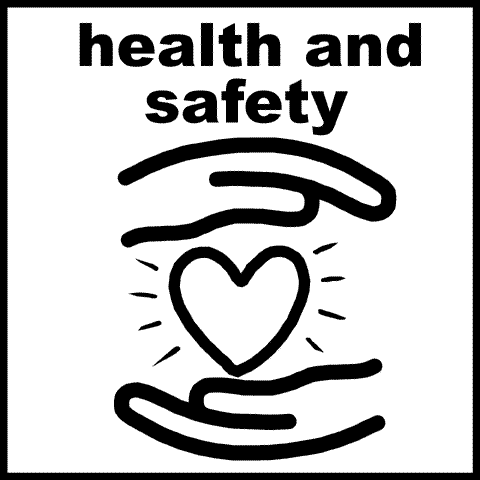 In addition to their social costs, workplace injuries and illnesses have a major impact on an employer’s bottom line. It has been estimated that employers pay almost $1 billion per week for direct workers’ compensation costs alone. The costs of workplace injuries and illnesses include direct and indirect costs. Direct costs include workers’ compensation payments, medical expenses, and costs for legal services. Examples of indirect costs include training replacement employees, accident investigation and implementation of corrective measures, lost productivity, repairs of damaged equipment and property, and costs associated with lower employee morale and absenteeism.
In addition to their social costs, workplace injuries and illnesses have a major impact on an employer’s bottom line. It has been estimated that employers pay almost $1 billion per week for direct workers’ compensation costs alone. The costs of workplace injuries and illnesses include direct and indirect costs. Direct costs include workers’ compensation payments, medical expenses, and costs for legal services. Examples of indirect costs include training replacement employees, accident investigation and implementation of corrective measures, lost productivity, repairs of damaged equipment and property, and costs associated with lower employee morale and absenteeism.
via Safety and Health Topics | Making the Business Case for Safety and Health – Costs.
Machine Safety is Critical
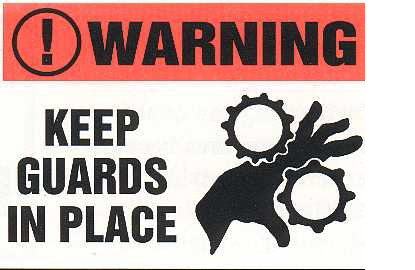 Machine safety is critical for worker safety, because machines have many ways to injure workers: Many machines have moving parts, sharp edges, and hot surfaces with the potential to cause severe workplace injuries such as crushed fingers or hands, amputations, burns, or blindness. Safeguards are essential for protecting workers from these preventable injuries. Any machine part, function, or process that might cause injury must be safeguarded. When the operation of a machine may result in a contact injury to the operator or others in the vicinity, the hazards must be eliminated or controlled.
Machine safety is critical for worker safety, because machines have many ways to injure workers: Many machines have moving parts, sharp edges, and hot surfaces with the potential to cause severe workplace injuries such as crushed fingers or hands, amputations, burns, or blindness. Safeguards are essential for protecting workers from these preventable injuries. Any machine part, function, or process that might cause injury must be safeguarded. When the operation of a machine may result in a contact injury to the operator or others in the vicinity, the hazards must be eliminated or controlled.
via CDC – Machine Safety – NIOSH Workplace Safety and Health Topic.
